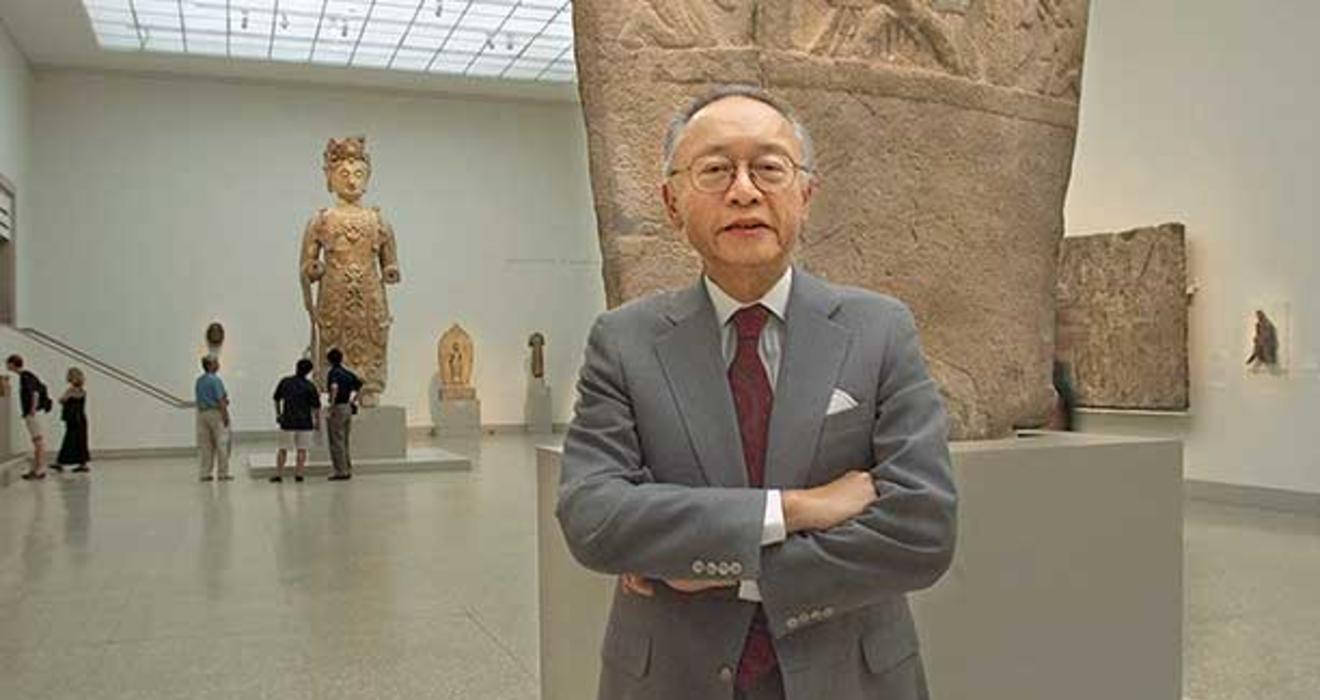
Dec. 9, 1930 • Oct. 3, 2018
SITTING IN A DARK lecture hall looking at slides is a staple of art history classes, but that wasn’t how Wen Fong ’51 *58 taught. “I don’t think I ever had a slide lecture” in his class, says Mike Hearn *90. Fong, who taught Chinese art history at Princeton for 45 years, “would unroll a 14th-century scroll on the seminar table and say, ‘What do you see?’” In seminars that often lasted four hours or more, Fong imparted his most important lesson: Never forget to closely examine the object itself.
It was that reverence for the work of art — its brush strokes, its texture, and its meaning — that fueled Fong, who was known for his boundless energy. He coupled his teaching at Princeton with serving as the consultative chairman of Asian art at New York City’s Metropolitan Museum of Art, a position he held for nearly 30 years. When Fong was hired in 1971, the Met had two galleries devoted to Asian art; today, there are more than 50. “He transformed the Met and created arguably the most important center for the study of Asian art in this country,” says Hearn, who is now the Met’s chairman of Asian art.
Born in Shanghai in 1930, Fong was a child prodigy in calligraphy. Donors paid for his work at a benefit at the Shanghai Children’s Library when Fong was 11. In 1948, he came to Princeton to study physics, but soon switched his major to European history. A decade later, after becoming a professor at Princeton, Fong and a colleague established the nation’s first Ph.D. program in Chinese art and archaeology at the University.
His passion for making works of art more accessible led the Met to create the Wen C. Fong Asian Art Study Room, where students, curators, and scholars from all over the world come to get a firsthand look at the museum’s treasures. Each year, more than 600 people visit the facility; they may request to view any piece in the Met’s collection.
Fong’s dedication to his students — and the rigor of his teaching — is legendary. “If you were giving a presentation in his seminar that week, you would be spending the previous Saturday or Sunday in Professor Fong’s seminar room, going over everything you had prepared,” recalls Andrew Watsky *94, professor of Japanese art history at Princeton and director of the University’s Tang Center for East Asian Art. “You would lay out your images and make your points, and he would listen carefully and press you to think deeper. Often, he would pull another photo out of a drawer and say, ‘What about this one?’”
Jennifer Altmann is a freelance writer and editor who formerly worked at PAW.






No responses yet